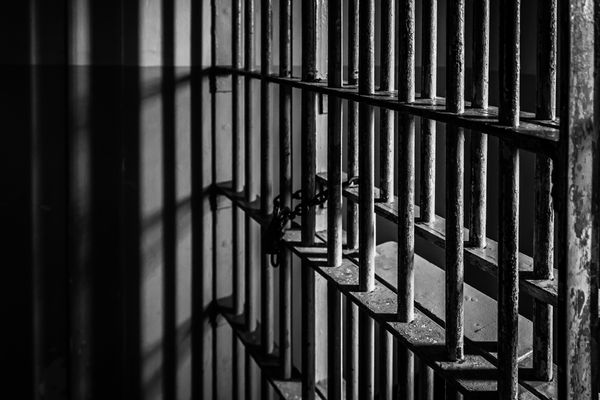1.2.5
Stalin's Power During & After the Communist Party
Stalin's Power During and After World War Two
Stalin's Power During and After World War Two
After World War Two, there needed to be a change of political tactics. But afterwards, Stalin tried to re-assert his personal power. This became harder as his health began to fail.


Controlling the State during WW2
Controlling the State during WW2
- Stalin's method of rule had to change during World War Two.
- The situation required less terror and a focus on mobilising resources for war.
- The State Defence Committee controlled war administration.
- The Supreme Command controlled the military.
- Following victory against the Nazis, Stalin was championed as a hero in the USSR.


Controlling the State after WW2
Controlling the State after WW2
- The years between 1945 and 1953 are described as 'high Stalinism'.
- Stalin focussed on consolidating his authority. This was mostly through terror.
- But by his 70th birthday (1949), Stalin was becoming weak. He mostly maintained power through divide and conquer tactics. He used political machinations to divide any rivals.
- A new generation of Communist party members, including Beria and Malenkov, threatened Stalin.


Stalin's political scheming (1950s)
Stalin's political scheming (1950s)
- The Mingrelian Affair (1951) was a purge of the Georgian Communist party. The purge targeted Beria's allies.
- Following this, Stalin changed the Politburo in 1952. He transformed it into the Praesidium and expanded it from 10 to 36. This let him isolate Malenkov and Beria and promote younger politicians who supported him.


Another purge?
Another purge?
- Some argue that Stalin had plans for another purge in 1953.
- For example, doctors were arrested and accused of a plot to assassinate Stalin.
- It was believed this would be a pretext to start purging Jews in the USSR.
- Others argue that this would be used to remove Beria as a political threat.
- The purge did not come to being as Stalin died in 1953.
Historical assessment
Historical assessment
- Stephen Kotkin (1995): Looking at the lives of people in the industrial city of Magnitogorsk, Kotkin argues that for them, Stalin took on the image of 'a warm father figure' from the mid 1930s. His image was everywhere, a reassuring constant in the period of immense social change and disruption.
- Photographs of Stalin cut out from magazines and newspapers were pinned on the walls of people's homes.
1Communist Government in the USSR, 1917-85
1.1Establishing Communist Party Control, 1917-24
1.2Stalin in Power, 1928-53
1.2.1The Elimination of Opponents
1.2.2The Purges of the 1930s
1.2.3End of Topic Test - The Elimination of Opponents
1.2.4Stalin's Power Over the Communist Party
1.2.5Stalin's Power During & After the Communist Party
1.2.6End of Topic Test - Power Over the Communist Party
1.2.7A-A* (AO3/4) - Stalin in Power
2Industrial & Agricultural Changes
2.1Towards a Command Economy
2.2Industry & Agriculture in the Stalin Era
3Control of the People, 1917-85
3.1Media, Propaganda & Religion
3.2The Secret Police
4Social Developments, 1917-35
4.1Social Security
4.2Women & Family
5Historical Interpretations
5.1What Explains the Fall of the USSR, 1985-91?
5.1.1Economic Weakness
5.1.2Attempts at Economic Reform
5.1.3Failure To Reform The Communist Party & Soviet Gov
5.1.4Impact of Reforms
5.1.5End of Topic Test - Economic Reform
5.1.6Impact of the Nationalist Resurgence
5.1.7Impact of the Nationalist Resurgence 2
5.1.8End of the USSR
5.1.9Gorbachev & Yeltsin's Responsibility
5.1.10End of Topic Test - Nationalist Resurgence
5.1.11A-A* (AO3/4) - Explaining the Fall of the USSR
Jump to other topics
1Communist Government in the USSR, 1917-85
1.1Establishing Communist Party Control, 1917-24
1.2Stalin in Power, 1928-53
1.2.1The Elimination of Opponents
1.2.2The Purges of the 1930s
1.2.3End of Topic Test - The Elimination of Opponents
1.2.4Stalin's Power Over the Communist Party
1.2.5Stalin's Power During & After the Communist Party
1.2.6End of Topic Test - Power Over the Communist Party
1.2.7A-A* (AO3/4) - Stalin in Power
2Industrial & Agricultural Changes
2.1Towards a Command Economy
2.2Industry & Agriculture in the Stalin Era
3Control of the People, 1917-85
3.1Media, Propaganda & Religion
3.2The Secret Police
4Social Developments, 1917-35
4.1Social Security
4.2Women & Family
5Historical Interpretations
5.1What Explains the Fall of the USSR, 1985-91?
5.1.1Economic Weakness
5.1.2Attempts at Economic Reform
5.1.3Failure To Reform The Communist Party & Soviet Gov
5.1.4Impact of Reforms
5.1.5End of Topic Test - Economic Reform
5.1.6Impact of the Nationalist Resurgence
5.1.7Impact of the Nationalist Resurgence 2
5.1.8End of the USSR
5.1.9Gorbachev & Yeltsin's Responsibility
5.1.10End of Topic Test - Nationalist Resurgence
5.1.11A-A* (AO3/4) - Explaining the Fall of the USSR
Unlock your full potential with Seneca Premium
Unlimited access to 10,000+ open-ended exam questions
Mini-mock exams based on your study history
Unlock 800+ premium courses & e-books